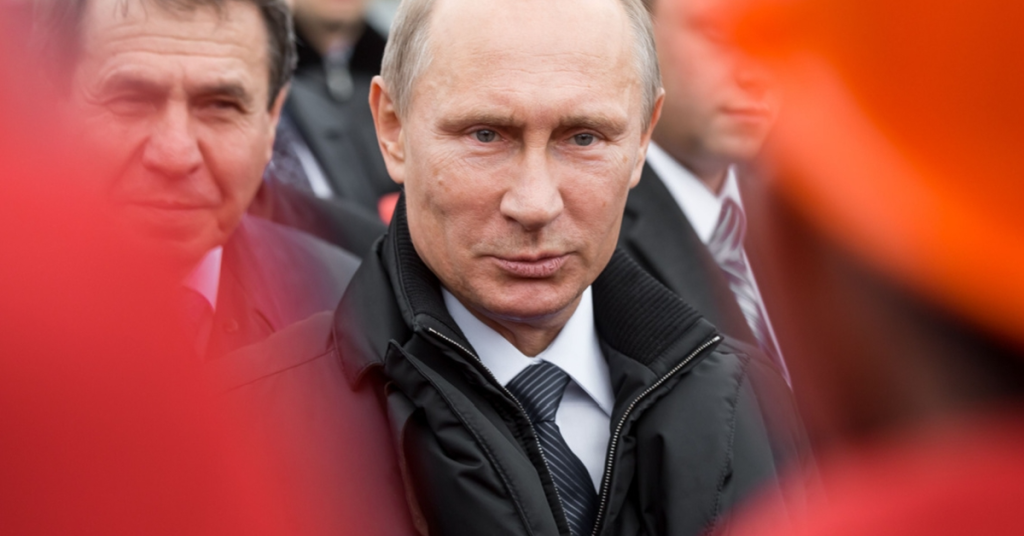A staged provocation involving Lithuania or the Baltic region could give Moscow a pretext to attack, with massive global economic consequences.
Others are reading now
A full-scale war between Russia and NATO would cost the world $1.5 trillion in just the first year, according to an analysis by Bloomberg Economics.
That figure includes destruction, skyrocketing energy prices, market instability, and the fallout of disrupted trade across Europe.
It’s a price tag nearly equal to the global impact of Russia’s invasion of Ukraine since 2022.
While a direct war between Moscow and NATO is unlikely for now, analysts warn that Russia’s growing weapons production and aggressive rhetoric increase the risk of escalation.
Also read
According to European intelligence sources, Russia is manufacturing more shells, missiles, and drones than its military currently needs—allowing it to stockpile for future confrontations.
A Train and a Provocation
One of the most likely flashpoints, according to regional officials, could be the Moscow-Kaliningrad train that passes through Lithuania.
Former Lithuanian Foreign Minister Gabrielius Landsbergis warned that Russia could stage an incident on Lithuanian soil, such as halting the train and claiming Russians are stranded, to justify sending troops under the pretext of “protection.”
A similar playbook could be used to provoke conflict in Estonia or Latvia, which, like Lithuania, have significant ethnic Russian minorities.
A Russian military move to occupy the Suwalki Corridor, narrow land between Lithuania and Poland, could cut the Baltic states off from the rest of NATO.
Baltics in the Crosshairs
Denmark recently warned that Russia might launch a local war in the next six months, possibly escalating to a threat against NATO within two years.
NATO’s new Secretary General, Mark Rutte, echoed the concern, pointing to the Baltic states, Estonia, Latvia, and Lithuania, as the most vulnerable targets on NATO’s northeastern flank.
Despite their small economies, the Baltics are strategically crucial.
If attacked, their defense would trigger NATO’s collective defense clause, setting the stage for a larger war.
Russia has already fortified military bases in Kaliningrad and along its northwestern border with NATO, while Western Europe continues to ramp up defense spending in response.
Wider War and Global Fallout
If war breaks out, Russia is expected to strike European cities, ports, and critical infrastructure, including energy facilities and communication cables.
Hybrid warfare tactics—like cyberattacks and sabotage—would likely accompany the physical assaults. Russia could also threaten nuclear strikes, which Bloomberg suggests might deter direct attacks from Western powers.
According to the analysis, the Baltic states’ economies would shrink by 43% in the first year of such a conflict.
The European Union’s GDP would decline by 1.2%, while the Russian economy—already hardened against sanctions—might fall just 1%.
Defense spending and isolation would prop up Russia’s internal economy, at least temporarily.
U.S. Ambiguity
During the G7 summit, former U.S. President Donald Trump referred to Vladimir Putin as a “friend” and questioned why Russia wasn’t included in the talks.
His remarks contrasted sharply with warnings from European leaders about the growing Russian threat, creating uncertainty about Washington’s stance in a potential future conflict.
Without immediate U.S. involvement, analysts warn, Russia could push deeper into Europe, further escalating the war.
Possible Futures: Peace, Expansion, or Collapse
The most likely scenario, Bloomberg says, is a continuation of the current stalemate in Ukraine. Neither Russia nor Ukraine appears capable of delivering a decisive blow.
Eventually, the war may end with a negotiated peace agreement—possibly brokered with help from the U.S. and China.
In that case, Ukraine could join the European Union while the U.S. and Russia normalize relations, perhaps reopening energy trade and easing sanctions. But while such a deal could slightly boost global economic growth, Europe may hesitate to trust Moscow again.
Other, less probable outcomes include Russia seizing southern Ukraine and invading Moldova, or Russia’s economy collapsing, leading to Vladimir Putin’s downfall.


